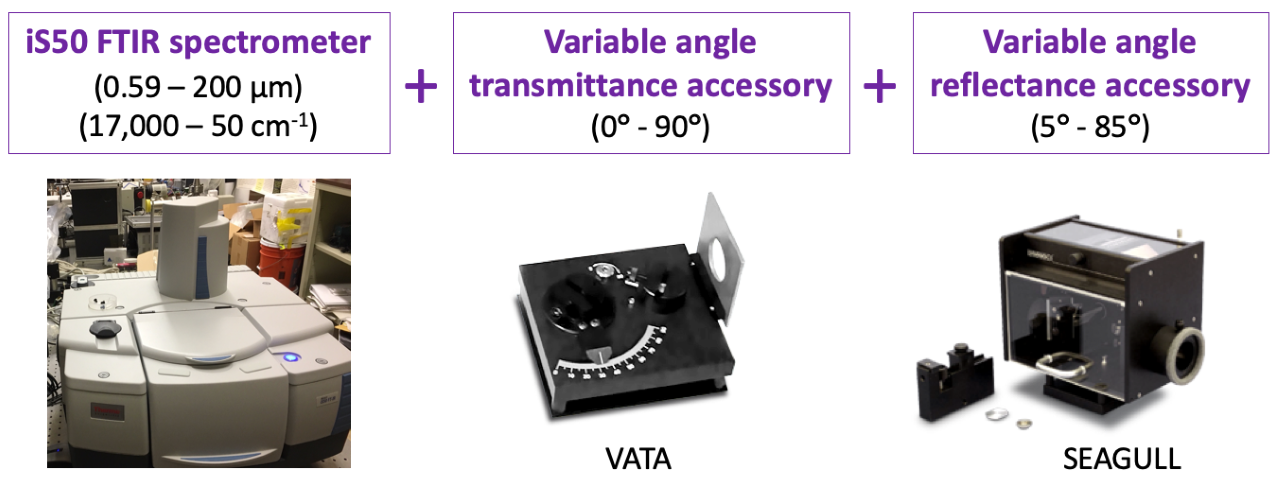Members: Ella Sciamma-O’Brien, Farid Salama, Ted Roush
Objectives:
Determine optical constants from visible to Far Infrared (FIR) of non-homogeneous solid samples to be used as input parameters in models for the interpretation of NASA mission data.
Equipment:
The Optical Constants Facility (OCF) is composed of:
- Thermo Fisher iS50 FTIR spectrometer with automated beamsplitter exchanger to allow full spectral coverage without breaking purge (17,000 – 50 cm-1 ⇔ 0.59–200 µm)
- Harrick Scientific variable angle transmittance accessory (VATA) (0° – 90°)
- Harrick Scientific variable angle reflectance accessory (SEAGULL) (5° – 85°)
Objectives: to determine optical constants from visible to FIR of non-homogeneous solid samples to be used as input parameters in models for the interpretation of NASA mission data
Methodology: The coupling of the iS50 FTIR spectrometer to the VATA and SEAGULL accessories allows the characterization of the scattering properties of nonhomogeneous samples, like planetary aerosol analogs formed in the COSmIC facility, over a wide incidence and emittance angle range (0–90°). Light scattering due to inhomogeneities in the sample can remove energy from the incident beam by redirecting it away from the detector in a single-angle transmittance measurement. This results in a lower transmittance value that can be misinterpreted as greater absorption, which leads to less accurate optical constants. The VATA and SEAGULL accessories enable the characterization of the angular light distribution in both transmission and reflection measurements resulting in more accurate refractive indices.
Applications: Analogs of Titan and Pluto aerosols and exoplanet/brown dwarf cloud particles.



























